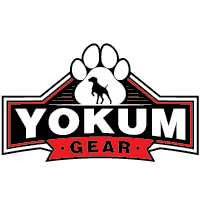Training a dog is an investment in their lifetime of good behavior and ensures they can coexist harmoniously within the family and society. Fortunately, various dog training devices are available that make the process more effective and less stressful for both the handler and the furry trainee. Here, we delve into some essential dog training devices that can aid in achieving desired results.
Clickers
A clicker is a small handheld device that makes a clicking sound when pressed. It is used in positive reinforcement training where the click is paired with a treat or praise to signify to the dog that they performed the desired behavior correctly. Over time, the dog learns to associate the click with a reward, which can accelerate the learning process.
Leashes and Collars
Leashes and collars are fundamental in controlling and guiding a dog during training sessions. There are different types of collars, such as flat collars, martingale collars, and training collars (prong and choke chains). Each serves specific purposes, and it’s crucial to choose the one that aligns with the training objectives and the dog’s comfort and safety.
Long Lines
A long line is a lengthy leash, often 15 to 30 feet, that allows a dog to roam more freely than a standard leash but still gives the handler control. It is instrumental in teaching recall commands as the dog can explore further distances while still being under control. Long lines are excellent for practicing obedience in semi-open spaces without the risk of the dog running off.
Treat Pouches
Treat pouches provide a convenient way to carry training treats. They keep treats easily accessible, allowing the handler to reward the dog promptly for good behavior. Many pouches come with adjustable waistbands or clips to attach them to belts or pockets, making them a practical addition to any training session.
Training Harnesses
Training harnesses, such as no-pull harnesses, are designed to discourage pulling behaviors. They distribute pressure across the dog’s chest and shoulders rather than their neck, providing better control and reducing the risk of injury. Harnesses can be particularly beneficial for training larger or stronger dogs.
Puzzle Toys and Interactive Feeders
Puzzle toys and interactive feeders can support training by stimulating a dog’s mind, encouraging problem-solving skills, and reducing boredom. They are especially useful for teaching patience, focus, and perseverance. These toys often involve elements where the dog must manipulate objects to receive a treat, thus making learning fun and engaging.
Remote Trainers and E-Collars
Remote trainers, or e-collars, are electronic devices that deliver a signal to the dog via a collar. These signals can be in the form of vibrations, tones, or static stimulation. They are primarily used for correcting unwanted behaviors at a distance and are effective for training in open areas where traditional methods might not suffice. Proper usage, training knowledge, and awareness of the dog’s well-being are crucial when employing e-collars to ensure humane and effective training.
Agility Equipment
Agility training equipment, such as tunnels, jumps, and weave poles, can be utilized to enhance a dog’s physical fitness, coordination, and obedience. These tools help in building a dog’s confidence and can be a fun way to test their responsiveness to commands in a dynamic environment.
Conclusion
Dog training devices are invaluable tools that can simplify the training process and lead to better outcomes. However, the success of any training regimen depends not just on the devices but also on the consistency, patience, and understanding of the trainer. By integrating these essential devices into training routines, handlers can foster a productive and positive learning experience for their canine companions.

